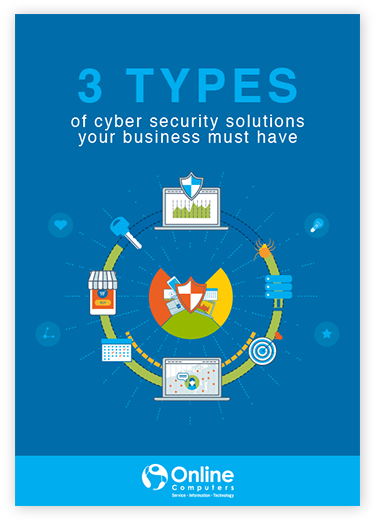More and more businesses are implementing remote work because of its numerous benefits. Boost in productivity, access to a wider pool of talent, and lower operating costs are some that immediately come to mind.
But for many small- or medium-sized business (SMB) leaders, deciding whether to stick to an office-based setup and integrating a remote workforce is hardly black and white, especially now during the COVID-19 outbreak.
As you make a decision, consider how telecommuting will affect your SMB during this global viral outbreak.
It’s widely acknowledged that remote workers are more productive than those who work strictly in the office. During an outbreak or a pandemic, employees will feel especially incentivized and could be even more productive. After all, they’re better able to manage their schedule and work in a familiar environment. And it’s not just because they don’t have to commute or drive to the office.
These are supported by key statistics and findings that emphasize the productivity-boosting benefits of telecommuting:
- 77% of full-time and part-time workers said they were more productive working remotely.
- 30% of workers stated they accomplished more when they worked from home.
- On average, remote workers take 22-minute breaks per day; office-based workers take only 18 minutes — taking into account that taking a healthy amount of breaks makes employees more productive.
- Remote workers work 6–7 hours more per week than office-based counterparts.
- Teleworkers are willing to take a pay cut in exchange for the privilege/ability to work remotely.
There’s little doubt that remote work should be normalized, and particularly during a pandemic, in which a fully distributed workforce lets your business continue to operate. With a well-thought-out remote work setup, staff can focus better on their tasks compared to when they’re at the office where there are plenty of distractions.
However, solitary work setups have downsides too. And given the massive social and environmental changes that a pandemic like COVID-19 brings, some studies on the benefits of working from home conducted in the last few years and under controlled environments may no longer apply.
That means a study in 2014 citing that remote workers are more productive than those who work in the office might no longer be relevant. The far-reaching effects of an outbreak could also potentially bring about enormous changes to the dynamics of working in the office and remotely.
For example, staff who work from home may be more distracted in their houses than at the office. Working from home may also be lonely. This can negatively affect work-life balance, which could then result in reduced productivity.
As a business owner, you must also take into account that performance indicators like creativity and innovative thinking aren’t easily measured. Given the general uncertainty that comes with a global outbreak, it falls on leaders to make crucial decisions regarding implementing a remote work policy that’s reasonable, whether it be integrating a temporary remote setup or sticking with an office-based workforce.
Staff members who are permitted to do mobile work enjoy the safety and convenience of working from home. They can rest easy, especially during a viral outbreak when everyone is encouraged to keep distance. Although collaboration and group cohesion are valuable in a workplace that encourages teamwork and creativity, there are times when these should take a backseat to safety.
Big companies with offices in New York and New Jersey like Amazon, and others like Twitter, as well as small businesses, have recently given employees work-from-home privileges.
Meanwhile, cybercriminals never rest and might leverage businesses’ precarious situation by targeting individuals’ computers. Staff may also be exposed to security threats they wouldn’t otherwise be exposed to if they work from the office using company computers that are relatively better protected.
Cybersecurity can be intimidating - We know!
Make sure you’re doing everything you can to prevent any breach. Learn the right kind of cybersecurity solution your organization needs — download our free eBook, 3 Types of cybersecurity solutions your business must have.
Moreover, you don’t have complete control over where remote staff work; they may connect to unsafe Wi-Fi networks and have their email and, consequently, company data compromised. They could lose or damage their devices containing sensitive business data, as well.
Luckily, these scenarios are avoidable. Implement a remote work policy that includes connecting to a secure VPN and streamlining remote work practices in which staff may only be allowed to work remotely provided they follow strict security and workflow procedures.
Businesses that do not have a business continuity plan (BCP) in place may struggle during a disease outbreak, but it’s an opportune time to finally establish one. It may not be possible to allow everyone in the company to enjoy work-from-home privileges, but in time you’ll be able to refine your policies and set employees’ and other stakeholders’ expectations. It also prepares your business for future disaster scenarios.
Bear in mind, though, that such a policy could create uneven practices and result in some employees perceiving unfairness. Remote work privileges may also be prone to misuse, which will undermine its productivity-boosting advantages. Lastly, there is the crucial fact that not all tasks can be done at home and that not all employees have the resources to work from home. In such a scenario, arrangements have to be made to accommodate staff that fall under these categories.
Nevertheless, business leaders must be decisive when tweaking workforce plans at such a crucial time. There is no one-size-fits-all solution; different types of businesses have different requirements.
A balanced and ideal work setup is one where various scenarios are carefully thought-out, employee welfare is well-considered, and business priorities are in order, particularly while dealing with an unprecedented pandemic.
Consider both the benefits and challenges that come with integrating a remote workforce and design one that’s right for your company. Be flexible as the situation calls for it. Call Online Computers’ expert technicians to align your technology with your business goals: 862-206-7355.





